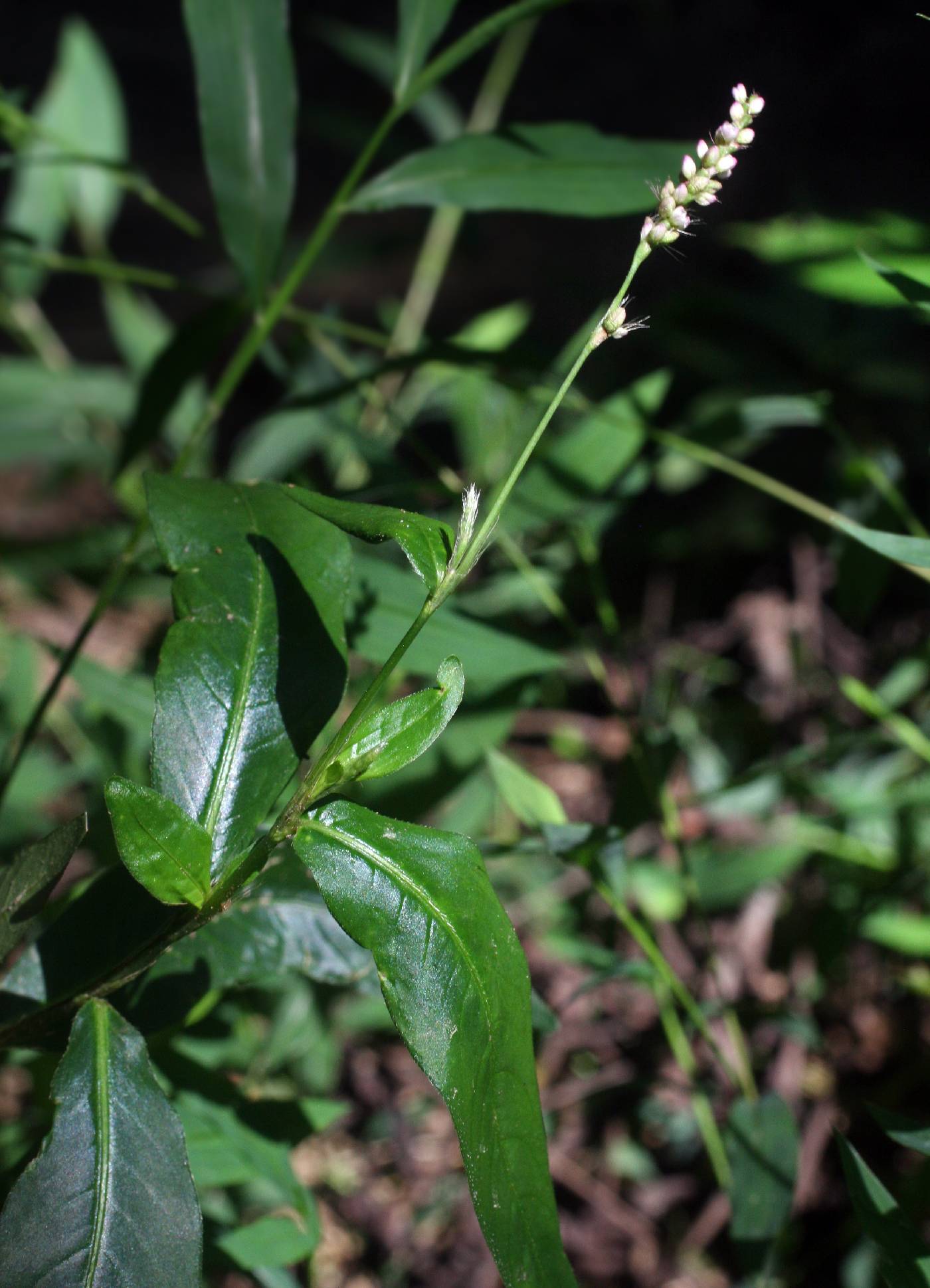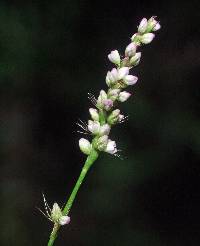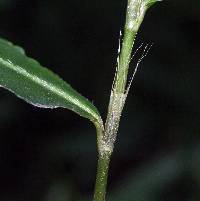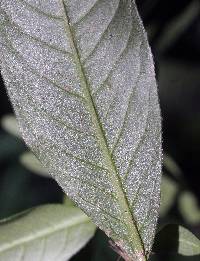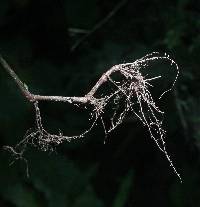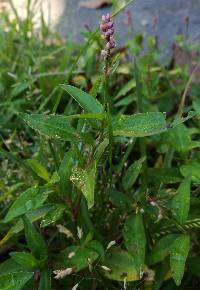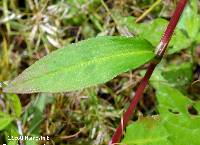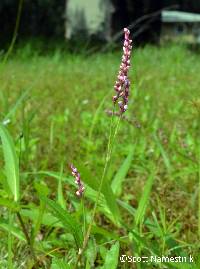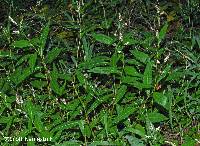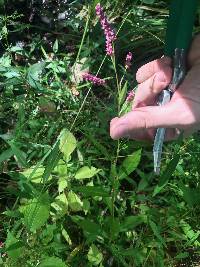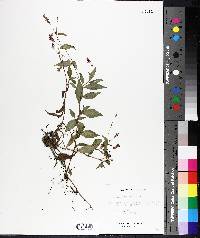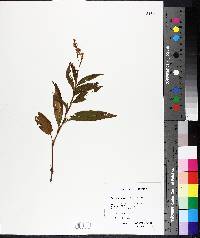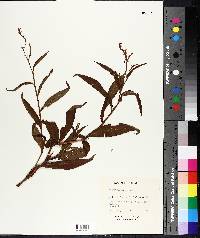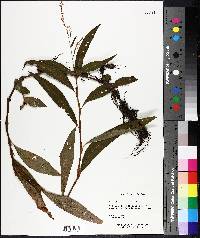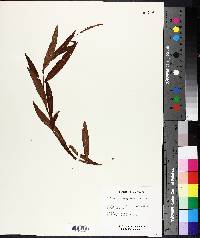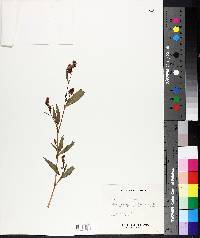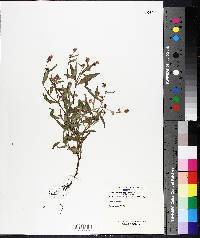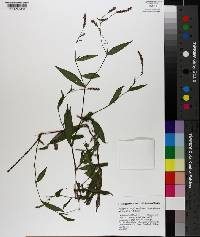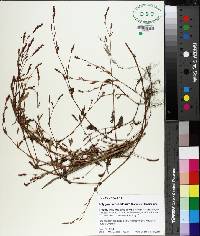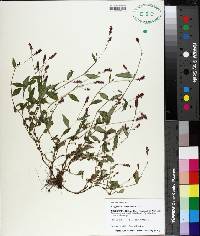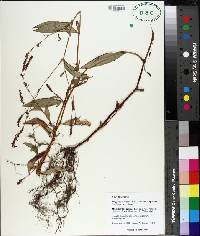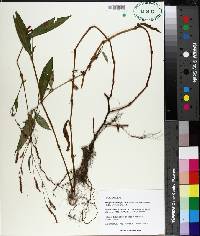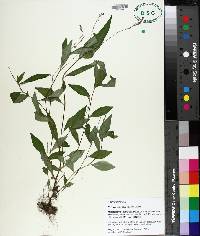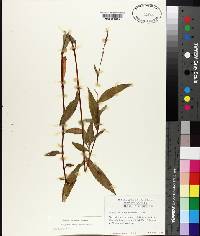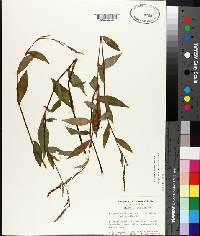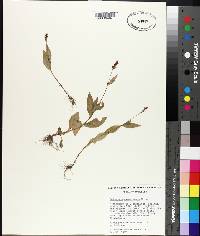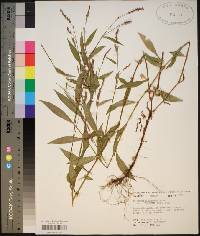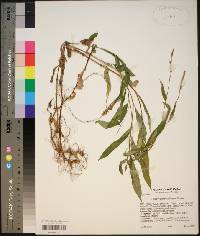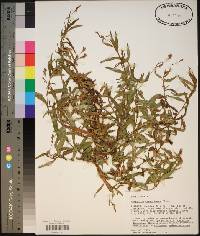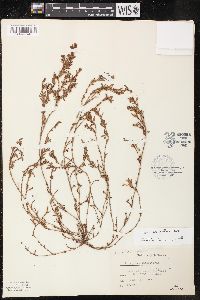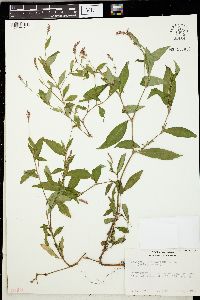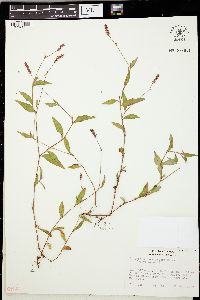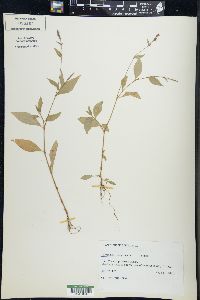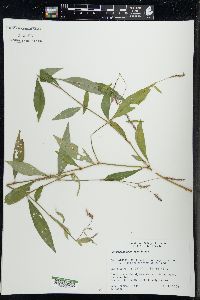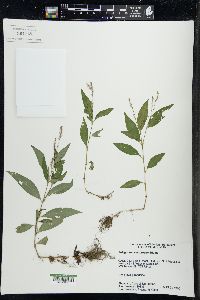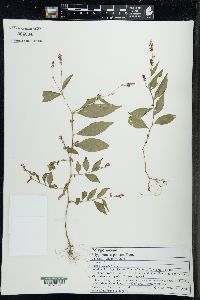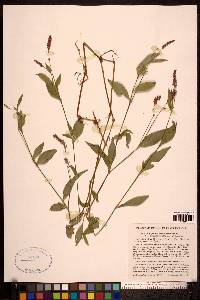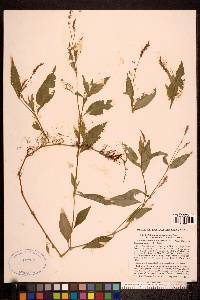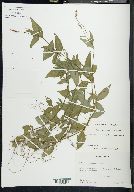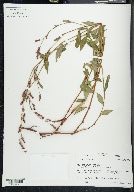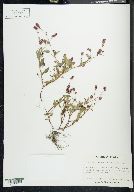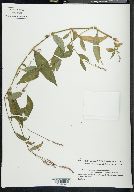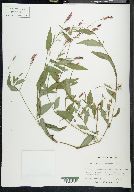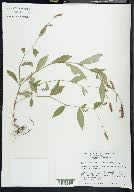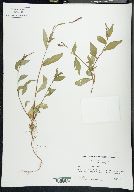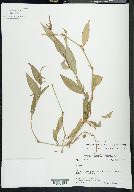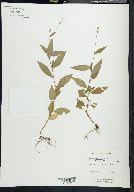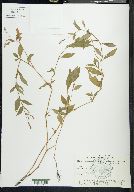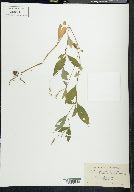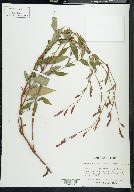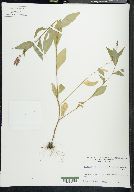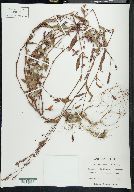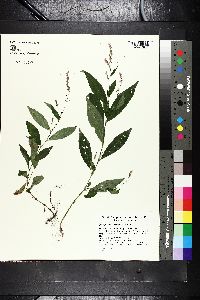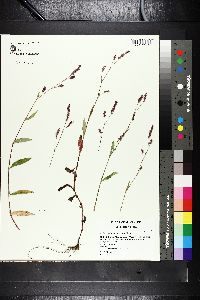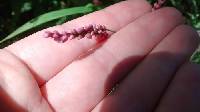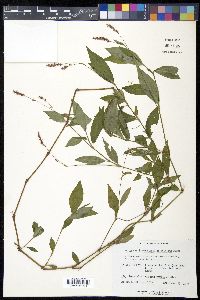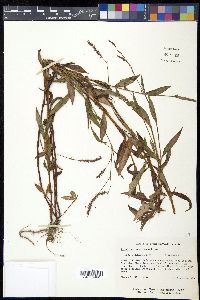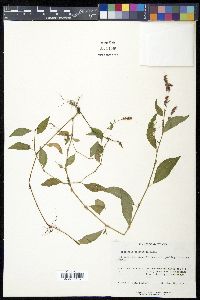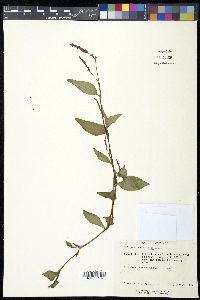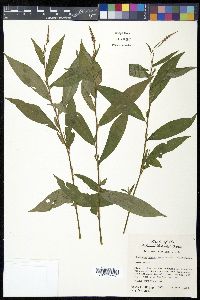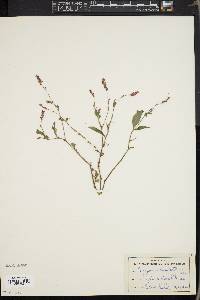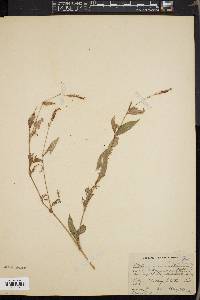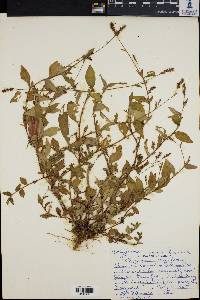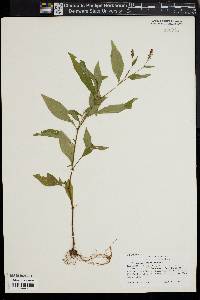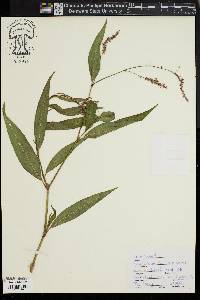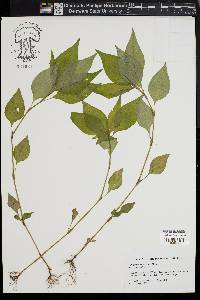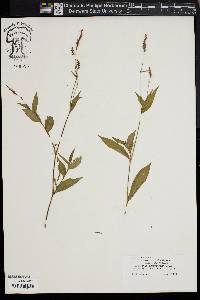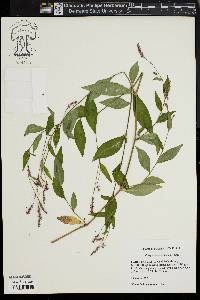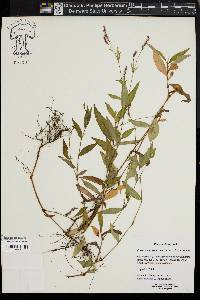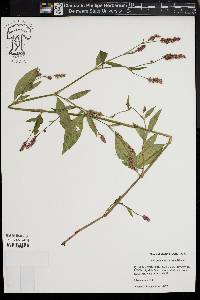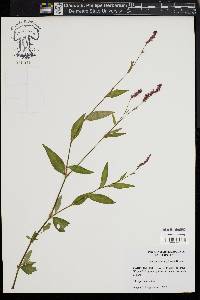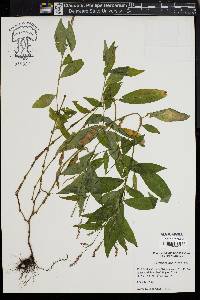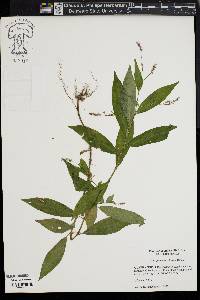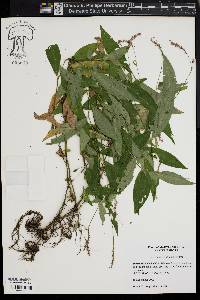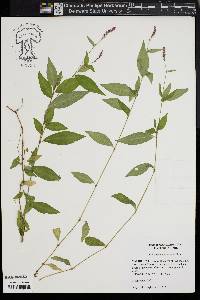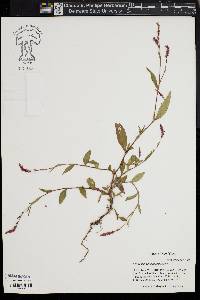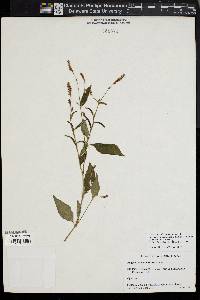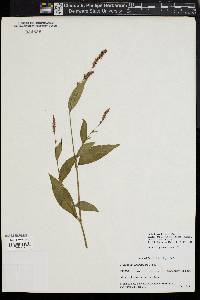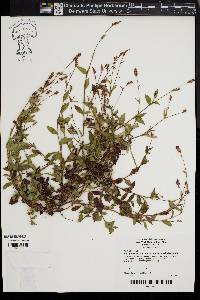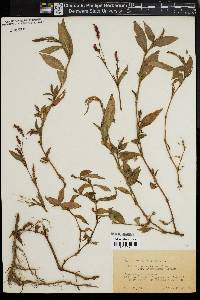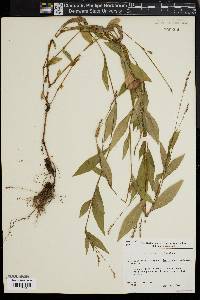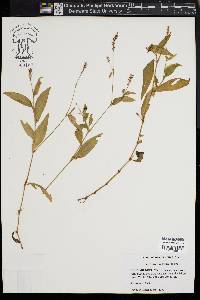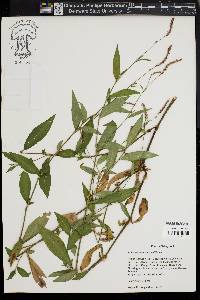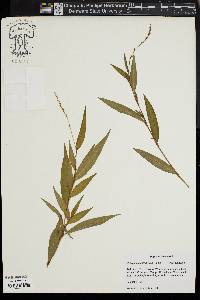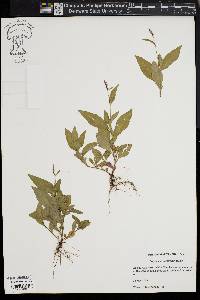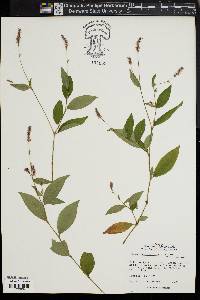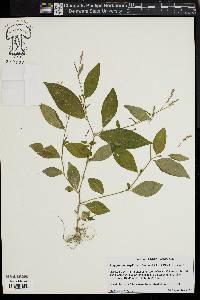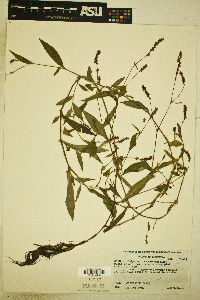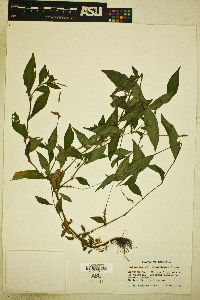
|
|
|
|
Family: Polygonaceae
Bristly Lady's-Thumb, more...oriental lady's thumb
[Persicaria caespitosa (Blume) Nakai, orth., morePersicaria caespitosa var. longiseta (Bruijn) C.F. Reed, orth., Persicaria longiseta f. albiflora (Honda) Masam., Polygonum caespitosum Blume, Polygonum caespitosum var. caespitosum Blume, orth., Polygonum caespitosum var. longisetum (Bruijn) Danser, Polygonum cespitosum Blume, Polygonum cespitosum var. cespitosum Blume, Polygonum cespitosum var. longisetum (Bruijn) Steward, Polygonum longisetum Bruijn, Polygonum longisetum var. longisetum] |
Plants annual, 3-8 dm; roots also often arising from proximal nodes; rhizomes and stolons absent. Stems decumbent to ascending, branched, without noticeable ribs, glabrous. Leaves: ocrea hyaline to brownish, cylindric, 5-12 mm, chartaceous, base sometimes inflated, margins truncate, ciliate with bristles 4-12 mm, surface glabrous or strigose, not glandular-punctate; petiole 0.1-0.3(-0.6) cm, glabrous, leaves sometimes sessile; blade without dark triangular or lunate blotch adaxially, ovate-lanceolate to linear-lanceolate, 2-8 × 1-3 cm, base tapering to cuneate, margins antrorsely strigose, apex acute to acuminate, faces glabrous or sparingly strigose along veins abaxially, glabrous or strigose along midvein and margins adaxially, not glandular-punctate. Inflorescences terminal, sometimes also axillary, erect, uninterrupted, 10-40(-80) × 3-7 mm; peduncle 10-50 mm, glabrous; ocreolae overlapping, margins ciliate with bristles (0.5-)1-4(-6) mm. Pedicels ascending, 1-2 mm. Flowers 1-5 per ocreate fascicle, homostylous; perianth pinkish green proximally, roseate distally, glabrous, not glandular-punctate, scarcely accrescent; tepals 5, connate ca. 1/ 3 their length, obovate, 2.2-2.8 mm, veins not prominent, not anchor-shaped, margins entire, apex obtuse to rounded; stamens 5, included; anthers yellow, elliptic to ovate; styles 3, connate proximally. Achenes included, dark brown to black, 3-gonous, 1.6-2.3 × 1.1-1.6 mm, shiny, smooth. Flowering May-Oct. Floodplain forests and woodlands, shorelines of ponds, moist roadsides, waste places; 0-300 m; introduced; B.C., N.B., Ont.; Ala., Conn., Del., Fla., Ga., Ill., Ind., Iowa, Kans., Ky., La., Maine, Md., Mass., Mich., Minn., Miss., Mo., Nebr., N.J., N.Y., N.C., Ohio, Pa., S.C., Tenn., Tex., Vt., Va., W.Va., Wis.; e Asia; introduced also in Europe. Persicaria longiseta is morphologically similar to another Asian species, P. posumbu (Buchanan-Hamilton ex D. Don) H. Gross (= P. caespitosa). Its spread in the United States since its introduction near Philadelphia in 1910 was summarized by A. K. Paterson (2000).
Freely branched, soon decumbent annual to 1 m, glabrous or partly strigose; lvs thin, dark green, lanceolate to elliptic or oblanceolate; ocreae strigulose or glabrous, ciliate with bristles 5-10 mm, racemes dense, 2-4 cm נ5 mm; ocreolae overlapping, their cilia mostly 2-3.5 mm, often equaling or surpassing the fls; achenes black, smooth and shining, trigonous, 2-2.5 mm; 2n=22, 24. Native of e. Asia, now a common weed, especially in moist soil, in much of our range, especially eastward. (Persicaria longiseta) Most of or all our plants represent the var. longisetum (De Bruyn) Stewart. Var. cespitosum, with shorter bristles on the ocreae and ocreolae, may also be expected. Gleason, Henry A. & Cronquist, Arthur J. 1991. Manual of vascular plants of northeastern United States and adjacent Canada. lxxv + 910 pp. ©The New York Botanical Garden. All rights reserved. Used by permission. With shorter bristles on the ocreae and ocreolae, may also be expected. Gleason, Henry A. & Cronquist, Arthur J. 1991. Manual of vascular plants of northeastern United States and adjacent Canada. lxxv + 910 pp. ©The New York Botanical Garden. All rights reserved. Used by permission. From Flora of Indiana (1940) by Charles C. Deam Indiana Coefficient of Conservatism: C = null, non-native Wetland Indicator Status: FAC |
|
|
|
This project was made possible in part by the Institute of Museum and Library Services [MG-70-19-0057-19].
Powered by Symbiota

